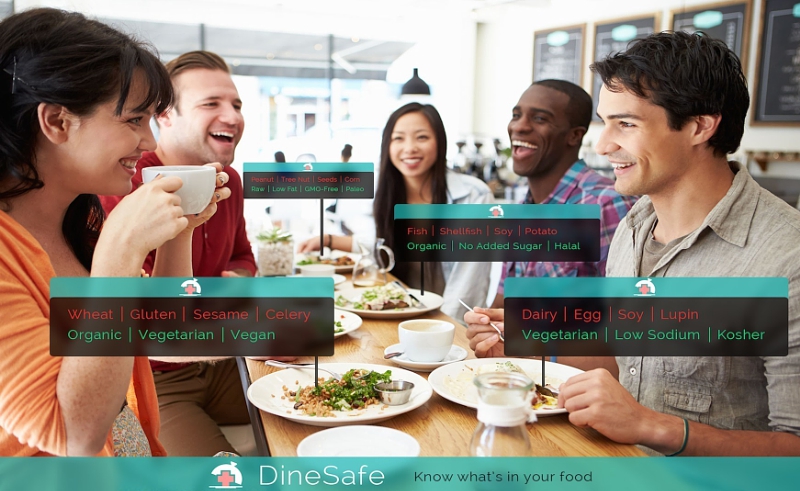Taking Some Risk Away from Dining Out
3 Min Read By Nick Caturano
The exploding rise in food allergies is not showing signs of slowing or going away anytime soon. Yet many restaurants are still resistant or clouded by the myth that real solutions are too costly or overwhelming to implement. Not so. Addressing this challenge head on is not only the right thing, but it’s inevitable to the survival of restaurants as the trend continues. Because a food allergy can turn deadly at any time, the UK and the EU already require disclosure of allergens in food, and many states are heading that way as well.
What To Do
- Take it seriously and embrace the opportunity. Yes, some guests claiming they have food allergies are really just preferences, but a decision to ignore an allergen request can be devastating. Restaurants must treat every request with genuine concern, always assume it’s real. That culture will reflect from the top down.
- #KnowWhatsInYourFood. Go through your menu, stockroom and coolers. Fortunately allergen disclosure for the top eight allergens is now standard, The Food Allergen Labeling and Consumer Protection Act of 2004. If two- or three-hour commitment is too much or want to make extra sure, trust a company like MenuTrinfo to do the work for you.
- Educate yourself and staff, train, adapt, repeat. Groups like AllerTrain.com provide training resources online inexpensively. Discuss regularly in pre-meals, create a process that ensures fluid communication with all staff, from check in to food running. Take the guess work out of what needs to be done.
- Cross contamination. A big one. Have a separate prep area and process, fry in a separate clean pan. Yes,it can be done. Sometimes there are no perfect solution, but care and honesty with guests as they themselves deal with the challenges, they live with, goes a long way to building bridges and creating solutions.
- As suggested by snacksafely.com, it should be standard to stock epinephrine auto-injectors in house in case of emergency. We also firmly believe in shared responsibility. We all forget some of the most important of things sometimes, but guests should always do their best to have their own EPI’s on them at all times.
What happens when the estimated 15 million Americans with food allergies or the 60 percent of American adults who report dietary restrictions decide to eat out? Until now, it meant spending time researching menus online and calling restaurants to ask about things like food preparation and cross-contamination.
#KnowWhatsInYourFood is more than a hashtag–it’s a mantra.
Our new app DineSafe helps diners and restaurants alike navigate the world of food allergies and special dietary preferences, including vegetarian, vegan, paleo, kosher and others. Diners can rest easy knowing the menus DineSafe presents are free of their particular allergens, while restaurants can gain loyal followings of people with food allergies, along with their networks of family and friends. The app takes the risk out of dining out nearly 8,000 restaurants nationwide, with more being added daily.
Restaurants can add their menu to the app tracking Top eight allergens with the ability to track as many as 33 allergens and 11 dietary preferences. Upon their first use, diners tell the DineSafe app what their restrictions are, and then the app serves up custom menus from nearby restaurants offering foods that are safe to eat within those restrictions.
#KnowWhatsInYourFood is more than a hashtag–it’s a mantra. DineSafe provides restaurants with an accurate, real-time tool for keeping track of all menu item ingredients in a centralized location and a standardized format that helps guests, servers, chefs, and even hosts or hostesses access the information and use it in a way that caters to their establishments and their customers personally.
In the coming months, DineSafe will introduce additional dietary preferences, including calorie, carbohydrate, protein and fat content. The company is actively seeking restaurants who would like to add their menu offerings to DineSafe. Future plans include expanding into other countries and making the DineSafe app available in other languages. The company has partnered with menu labeling experts MenuTrinfo® to help restaurants learn about and properly label food allergens.
Completely free for consumers and restaurants, DineSafe is available on the Apple App Store and on Google Play.


